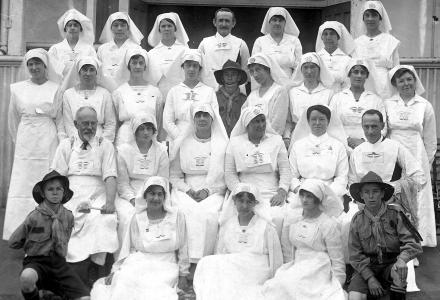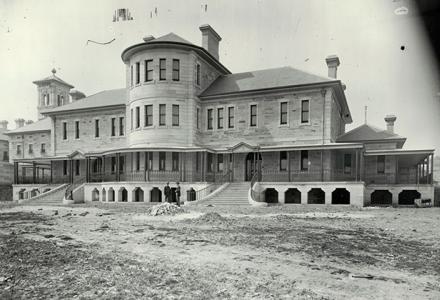Thomas Henley Manns was one of thousands of British immigrants who sought a new life in Australia. In 1914, he was employed in one of the timber camps near Busselton. In October, Manns enlisted in the AIF and he was amongst the first six hundred Western Australians to volunteer. He sailed from Fremantle in December 1914, bound, he thought, for England, but destined for the Dardanelles.
Manns landed at Gallipoli on 25 April. He was wounded in the leg by bullet and shrapnel fire and evacuated from the Peninsula. They took Manns to Harefield, a country estate in southern England, to recuperate. Though his leg healed soon enough, Manns began to show the first signs of pulmonary tuberculosis. Henley was discharged as permanently unfit and returned to Australia in 1916.
But that wasn't the end of Henley's war. Manns signed on for the Australian Munitions Workers Scheme. British industry was left desperately short of manpower and men were needed to meet the Great War’s insatiable demand for armaments. Australia sent six thousand men, Henley amongst them, on troopships for civilian service overseas.
But the conditions in the factories were appalling. It was not just the hazards of the industry, but the pay and conditions were abysmal by Australian standards. Manns may well have been a patriot but he was also a man who knew the value of skilled labour and he had a wife to provide for as well. He was eventually forced to take on lighter duties, but that work didn't pay. The authorities conceded. A medical officer certified him unfit for work and Australia agreed to fund the cost of repatriation.
Manns would not sail home without his wife, she was pregnant at the time and he refused to leave her. With little other income he took on work sawing timber at Bedford. Just two days before the Armistice was declared, Manns fell forty feet from a ladder. A man who had survived gun and shrapnel fire at Gallipoli, and the chancy business of one of Britain's largest munitions factories, was fatally injured felling the branch of an oak tree.
So far as Mrs Manns was concerned her husband had died for the war effort. She wrote to the Minister of Defence asking he be buried as a soldier would be, in the military cemetery at Harefield. His body lies there to this day, not far from the bodies of other Australian soldiers.



